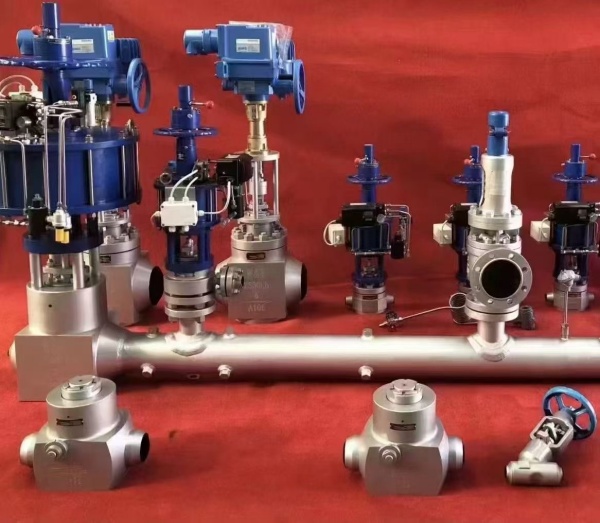
news
德国维替阀门 2025-05-13 15:14 642
To ensure the normal operation of the drainage system, in addition to guaranteeing a reasonable design of the drainage system, choosing the appropriate drainage device is also of vital importance.
Among the various systems in a thermal power plant, the drainage system is a complex and disordered one. Although the significance of this system is not as great as that of large systems such as the main steam, whether it operates normally or not not only affects the economy of the entire power plant, but also has a significant impact on the safety of the entire power plant.
Characteristics of the steam trap system in power plants and the current usage status of steam traps
1. The generation mechanism and hazards of steam hydrophobic
Steam inevitably loses heat during transmission. When it approaches the saturation temperature, condensate water, also known as hydrophobic water, will precipitate. Especially in areas where steam completely stops flowing, even though the steam has superheat, hydrophobic water will still occur. The condensate formed in the steam pipeline will have an impact on both the safety and economy of the unit.
On the one hand, the condensate in the pipeline is the root cause of water shock and water hammer, posing a safety hazard to the equipment. The condensate conveys impurities in the steam pipeline, which can easily lead to scaling of heat exchange equipment. On the other hand, according to Dalton's partial pressure law, if the steam is mixed with hydrophobic water, the rated pressure of the steam will decrease, resulting in a decline in the steam's working capacity and a decrease in the system's efficiency. Therefore, promptly draining the condensate from the steam system is not only a safety requirement for steam pipelines and equipment, but also a need for energy conservation and efficiency improvement in the steam system.
2. Characteristics of the drainage System in Thermal Power plants
The drainage of thermal power plants can be divided into two parts: start-up drainage and regular drainage. According to the system where the drainage is located, it can be further classified into drainage of the plant's internal pipelines, drainage of thermal equipment, drainage of boiler auxiliary equipment, drainage within the turbine body, and drainage systems to prevent water from entering the turbine, etc.
It is well known that the drainage system of thermal power plants is very complex. To ensure the normal operation of the drainage system, in addition to reasonably designing the system and laying out pipelines according to the characteristics of each drainage part, choosing the appropriate drainage device is also of vital importance.

3. The current usage status of steam traps
At present, automatic steam traps are widely used in the steam drainage devices of thermal power plants. This device can promptly and automatically discharge the condensate and non-condensable gases in the steam system. Steam traps can be roughly classified into thermodynamic type, thermostatic type, mechanical type and hybrid type according to their different working principles. These four types of steam traps each have their own advantages, disadvantages and applicable scopes. When selecting a model, a comprehensive decision should be made based on the actual steam discharge temperature, pressure and water discharge volume of the actual steam discharge part.
Start-up drainage is the drainage carried out during the ignition and start-up stage of the unit. Due to the large amount of condensate in the warm pipe and the severe scouring of the vapor-water two-phase flow, the drainage devices of domestic units generally adopt Y-shaped stop valves with large diameters and good erosion resistance at present.
The steam traps used in the main steam pipeline, reheat steam pipeline, shaft-sealed steam pipeline, extraction steam pipeline and other systems for preventing water from entering the steam turbine of subcritical and above parameter units all belong to high-end valves.

At present, due to the constraints of factors such as technology, design and manufacturing, and metal materials, domestic valve manufacturing enterprises in China still lag behind international advanced enterprises in terms of energy conservation, environmental protection, safety and sustainable development strategies, and are unable to produce steam traps that meet the requirements. Therefore, under more demanding working conditions, imported valves still dominate the valve market.
With the further development of metal-sealed ball valve technology, metal-sealed ball valves have begun to occupy a place in the field of starting steam traps, especially in supercritical and ultra-supercritical units. As the working parameters of steam traps increase, the advantages of metal-sealed ball valves become more and more obvious.
Demand feedback